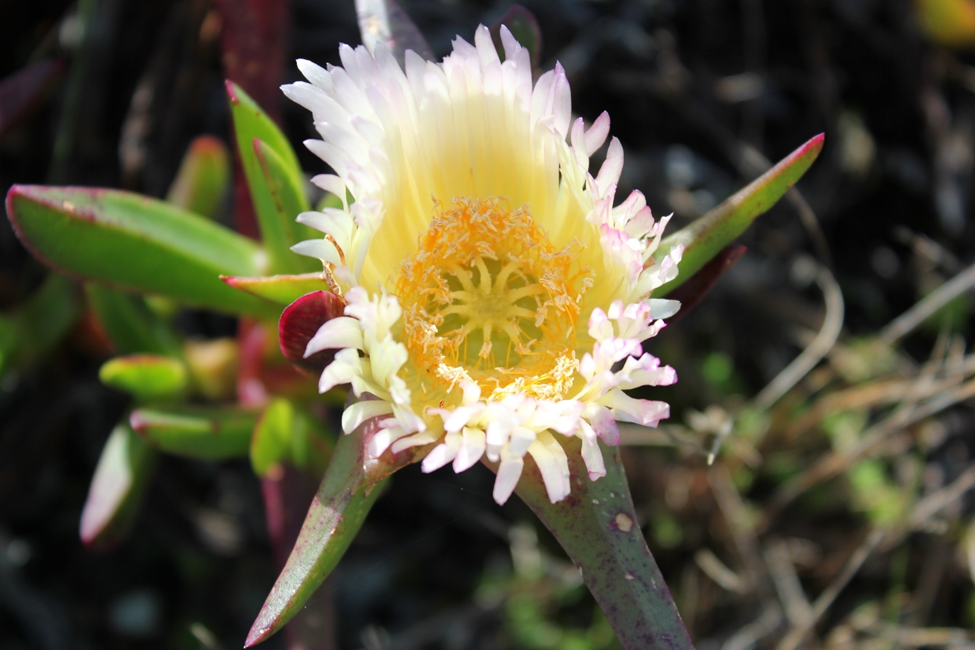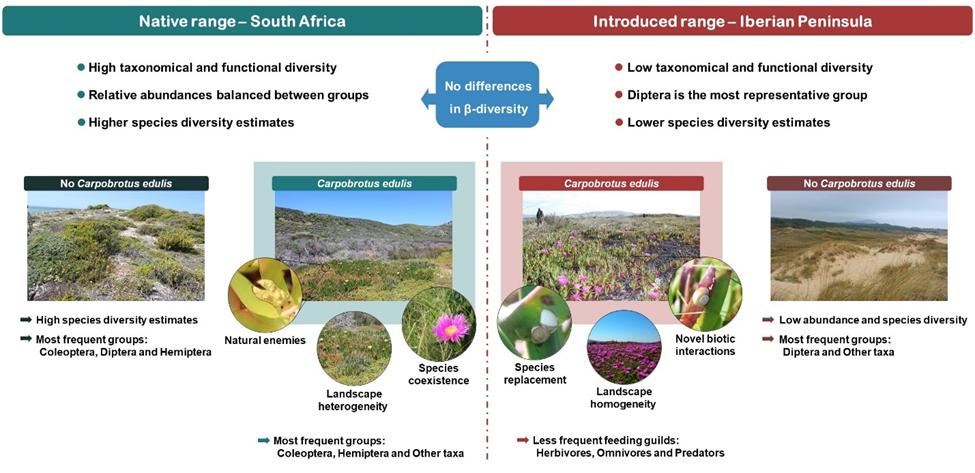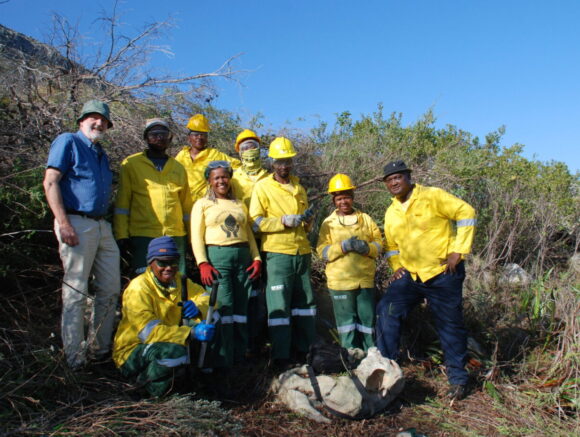26 May 2020 | By Jonatan Rodríguez
The invasive plant sour fig (Carpobrotus edulis: also known as Hottentot-fig, ice plant, highway ice plant, or pigface) can have a clear impact reducing the abundance of native invertebrates, with substantial effects on herbivores.

This was the findings from a recent study published by C·I·B researchers and collaborators, in the scientific journal NeoBiota.

The study, led by former C·I·B visiting PhD student Jonatan Rodríguez and co-authored by former C·I·B post-doc Ana Novoa (currently based at the Czech Academy of Sciences), C·I·B Director David Richardson, and Adolfo Cordero and Luís González from the University of Vigo (Spain), examined the compositional and trophic diversity of invertebrate species in ecosystems with and without sour fig in coastal areas in its native (South Africa) and introduced (Iberian Peninsula, Portugal and Spain) ranges.
Introduced from South Africa, the succulent sour fig, is among the most problematic invasive plant species in Europe. This mat-forming species poses a threat for the conservation of coastal areas in the Iberian Peninsula, and the factors influencing its invasion and its impacts are well documented. Despite this, little attention has been given to its influence on the species composition and trophic groups of native invertebrate communities. Most studies have targeted the herbivores. Therefore, it is necessary to study the effects of sour fig invasions on other trophic and taxonomic groups of native invertebrates in invaded ecosystems.
This study showed that the physical dominance of sour fig changes the co-occurrence of invertebrate groups, reducing the number of trophic groups and especially the presence of herbivores, omnivores and predators. These results suggest that the lack of natural enemies might be an important driver of the expansion of sour fig in its introduced range, which favours its survival by the reduction of attacks from natural enemies.
Understanding whether non-native species cause ecological harm or benefit over species at different levels is crucial, especially to guide conservation and restoration programmes.
“It is widely known that invasive plants change the composition of invertebrate communities and alter biotic interactions, especially plant-herbivore interactions,” Rodríguez explains. “Predicting such changes poses a severe challenge to conserve ecosystems in a time of rapid environmental disturbance and to define long-term invasive plant management strategies. To this end, further work is needed to examine long-term changes caused by invasive plants on invertebrate assemblages and the subsequent modification of ecological networks,” he concludes.

Read the paper
Rodríguez, J., Novoa, A., Cordero-Rivera, A., Richardson, D.M. and González, L. 2020. Biogeographical comparison of terrestrial invertebrates and trophic feeding guilds in the native and invasive ranges of Carpobrotus edulis. Neobiota, 56:49-72. https://doi.org/10.3897/neobiota.56.49087
For more information, contact Jonatan Rodríguez at jon.rodriguez.parra@gmail.com



